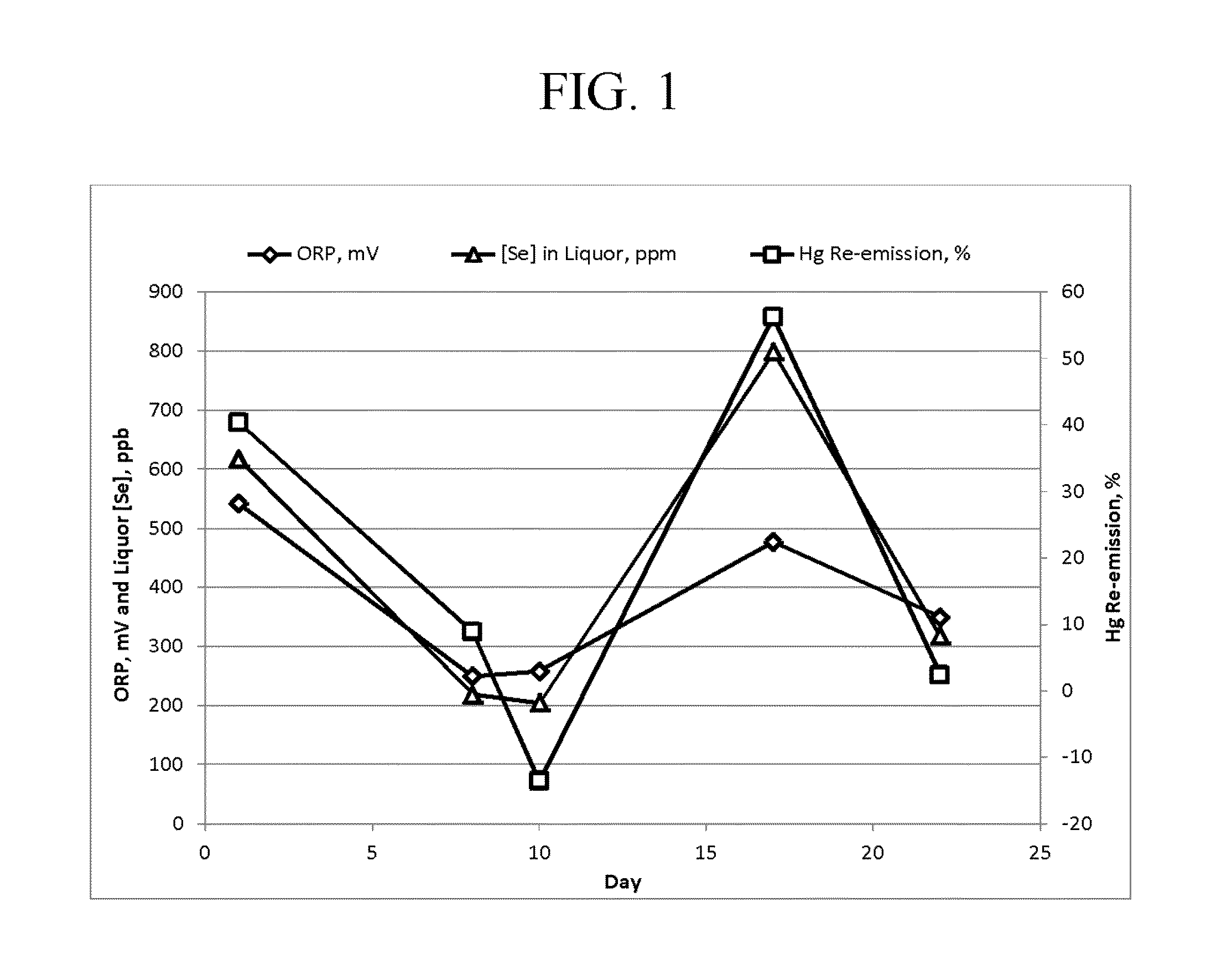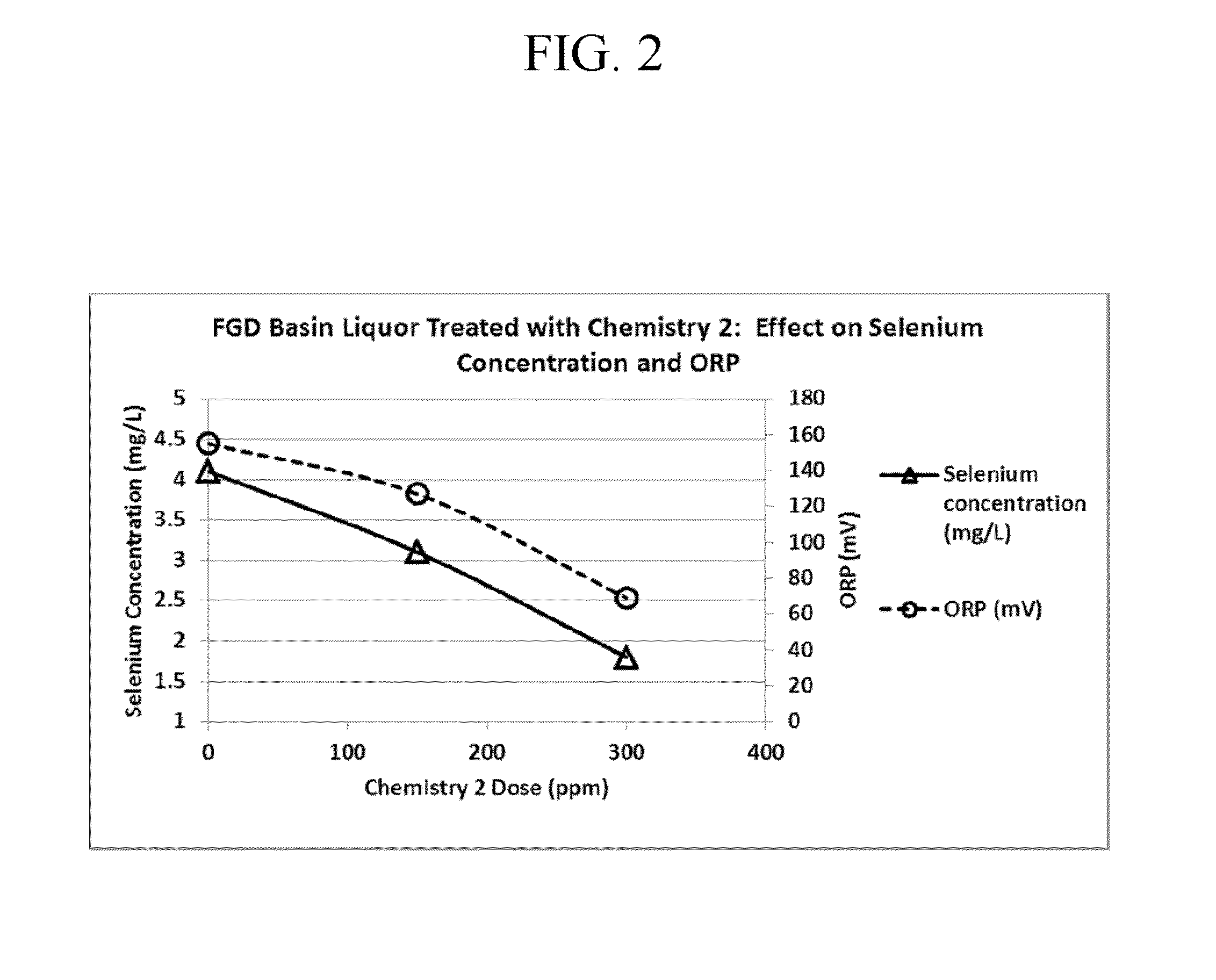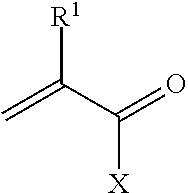Corrosion control in and selenium removal from flue gas wet scrubber systems
- Summary
- Abstract
- Description
- Claims
- Application Information
AI Technical Summary
Benefits of technology
Problems solved by technology
Method used
Image
Examples
examples
[0081]The foregoing may be better understood by reference to the following examples, which are intended to illustrate methods for carrying out the invention and are not intended to limit the scope of the invention.
[0082]It should be understood that various changes and modifications to the presently preferred embodiments described herein will be apparent to those skilled in the art. Such changes and modifications can be made without departing from the spirit and scope of the invention and without diminishing its intended advantages. It is therefore intended that such changes and modifications be covered by the appended claims.
examples 1-6
Example 1
[0083]A sample of scrubber water that was treated by vacuum filter. The objective was to remove mercury. The sample was investigated for mercury removal using design of experiments with two variables pH and dosage.
[0084]The results showed that mercury levels of less than 0.5 ppb in the treated water was achieved at various pHs at a reasonable product dosages. This work demonstrated that the product did achieve mercury capture from wet FGD liquors. The lower detection limit of the analytical method was 0.5 ppb.
The results are as follows:
TotalDissolvedHgHgDTCPaFlocculantbcontentcontentNumberSample Name(ppm)(ppm)(ppb)(ppb)60blank as recd0022.317.2(pH = 6)6110262202633026550267702610100270pH 7.1 adj w lime0011.36.2711021.60.5722021.37330275502710100280pH 8 adj w lime006.05.1811021.20.5822028330284402855028101002aDTCP is a polydithiocarbamic compound of the present inventionbFlocculant is commercially available from Nalco Company and is a very high molecular, 30 mole % anionic l...
example 2
[0085]A 2 L solution was prepared by dissolving 6.7 mg of sodium selenite, Na2SeO3·H2O, 14 mL of 0.141M Hg(NO3)2 and 18.4 g of calcium chloride, CaCl2·2H2O. The resulting solution had measured concentrations of 0.037 mM selenium, 1.04 μM mercury and 63 mM calcium chloride dehydrate.
[0086]The results are shown in the table below.
TreatmentAmt (gm / 500 mL)Hg (μg / L)% RemovedFly Ash8.042023.35Zeolite7.992130.00
[0087]The zeolite was a spent commercial catalyst. The fly ash sample was obtained from a coal-fired power plant. The fly ash sample was composed of 93% ash content with 6% residual carbon and 1% residual sulfur. These results clearly show that neither fly ash nor zeolites significantly reduce the ionic mercury content.
PUM
| Property | Measurement | Unit |
|---|---|---|
| Mass | aaaaa | aaaaa |
| Weight ratio | aaaaa | aaaaa |
| Molecular weight | aaaaa | aaaaa |
Abstract
Description
Claims
Application Information
 Login to View More
Login to View More - R&D
- Intellectual Property
- Life Sciences
- Materials
- Tech Scout
- Unparalleled Data Quality
- Higher Quality Content
- 60% Fewer Hallucinations
Browse by: Latest US Patents, China's latest patents, Technical Efficacy Thesaurus, Application Domain, Technology Topic, Popular Technical Reports.
© 2025 PatSnap. All rights reserved.Legal|Privacy policy|Modern Slavery Act Transparency Statement|Sitemap|About US| Contact US: help@patsnap.com



